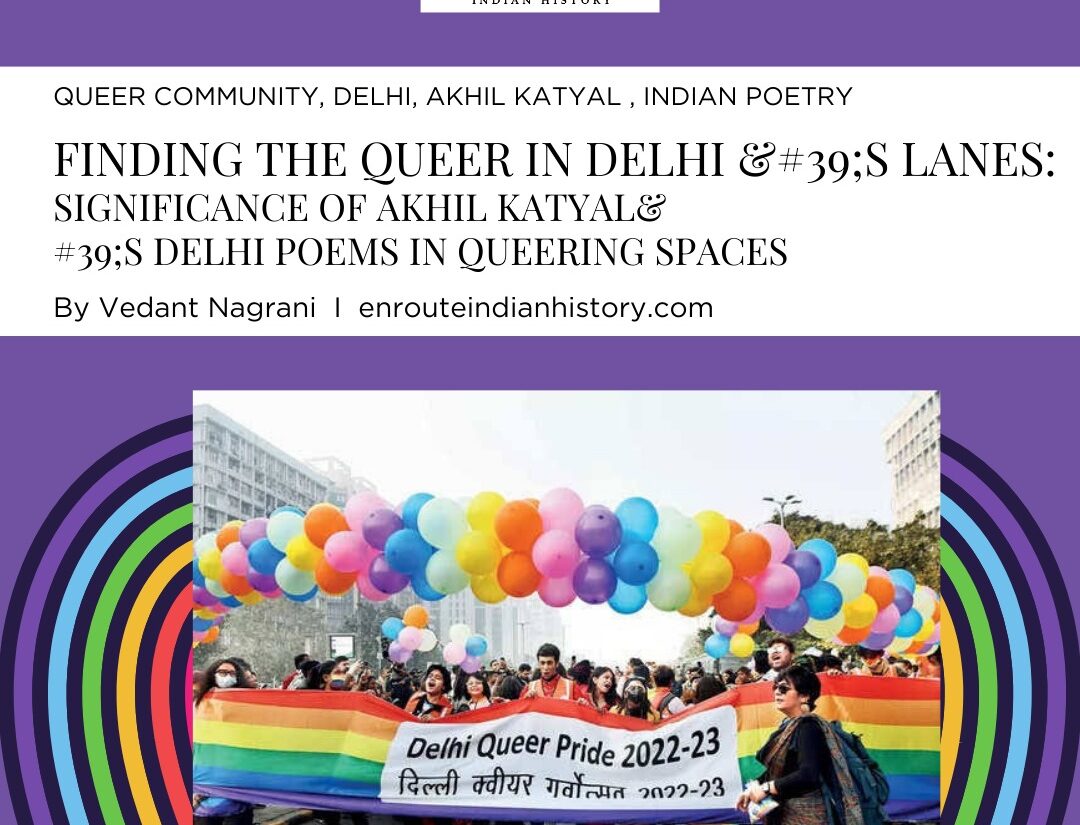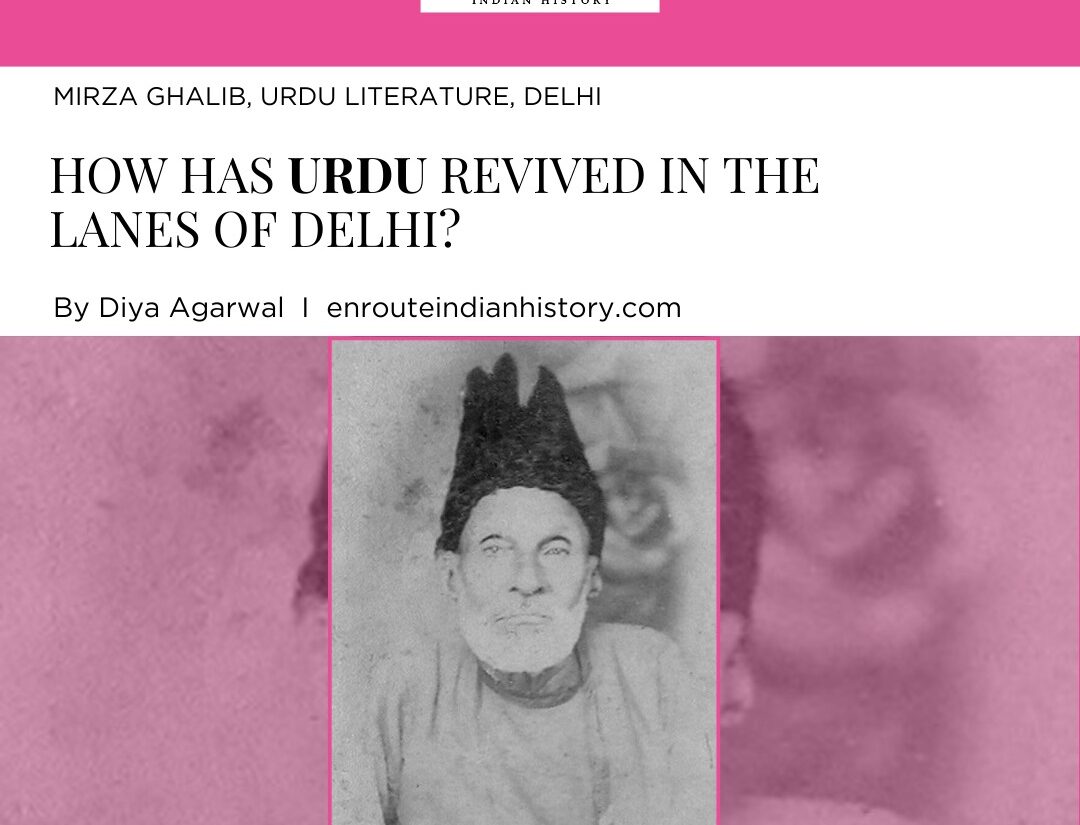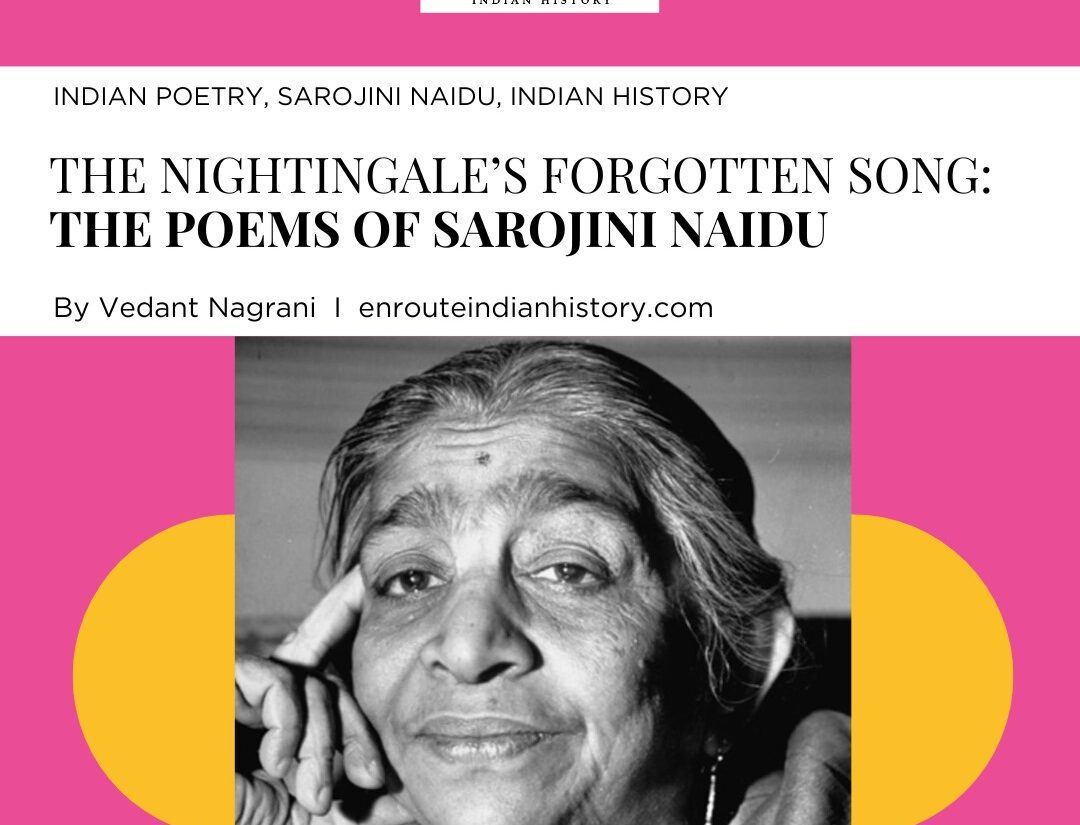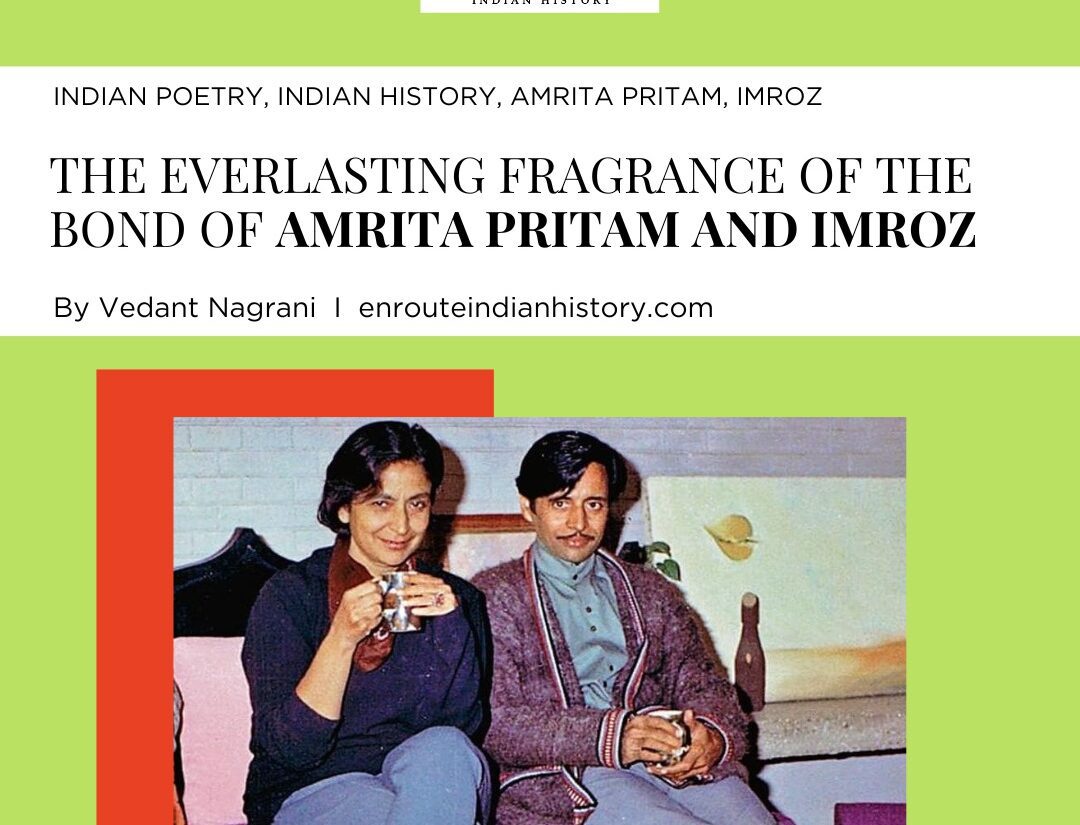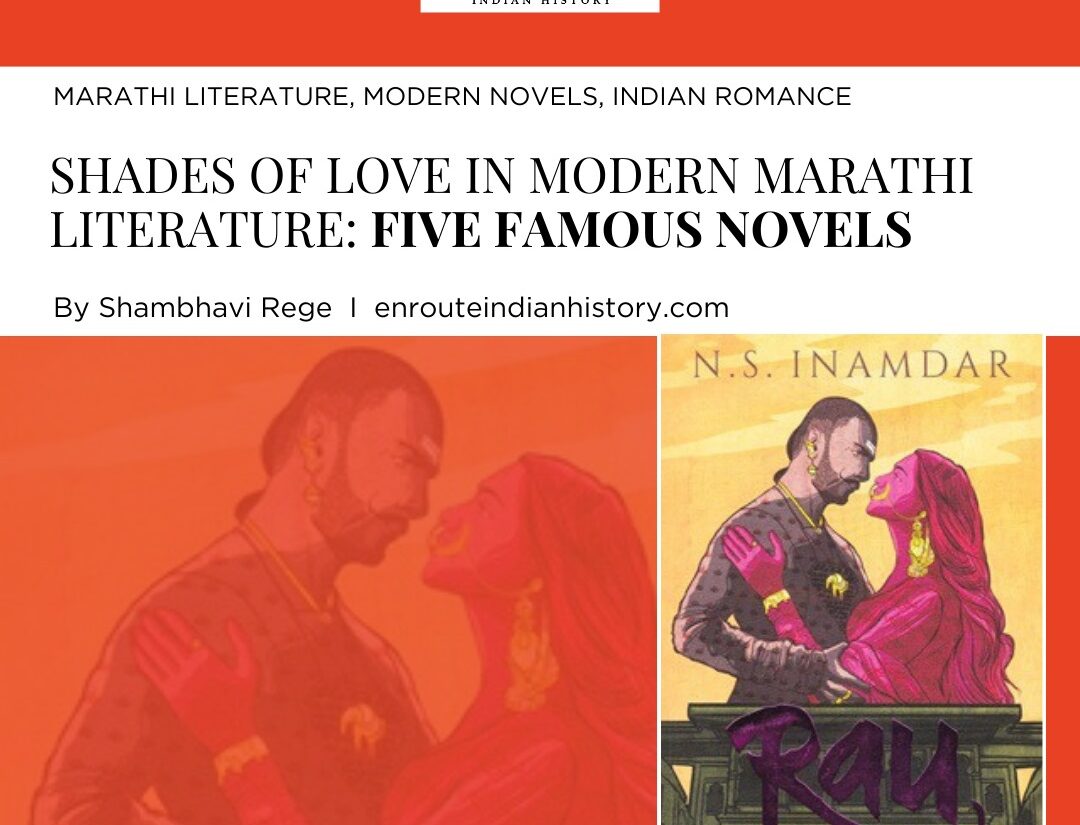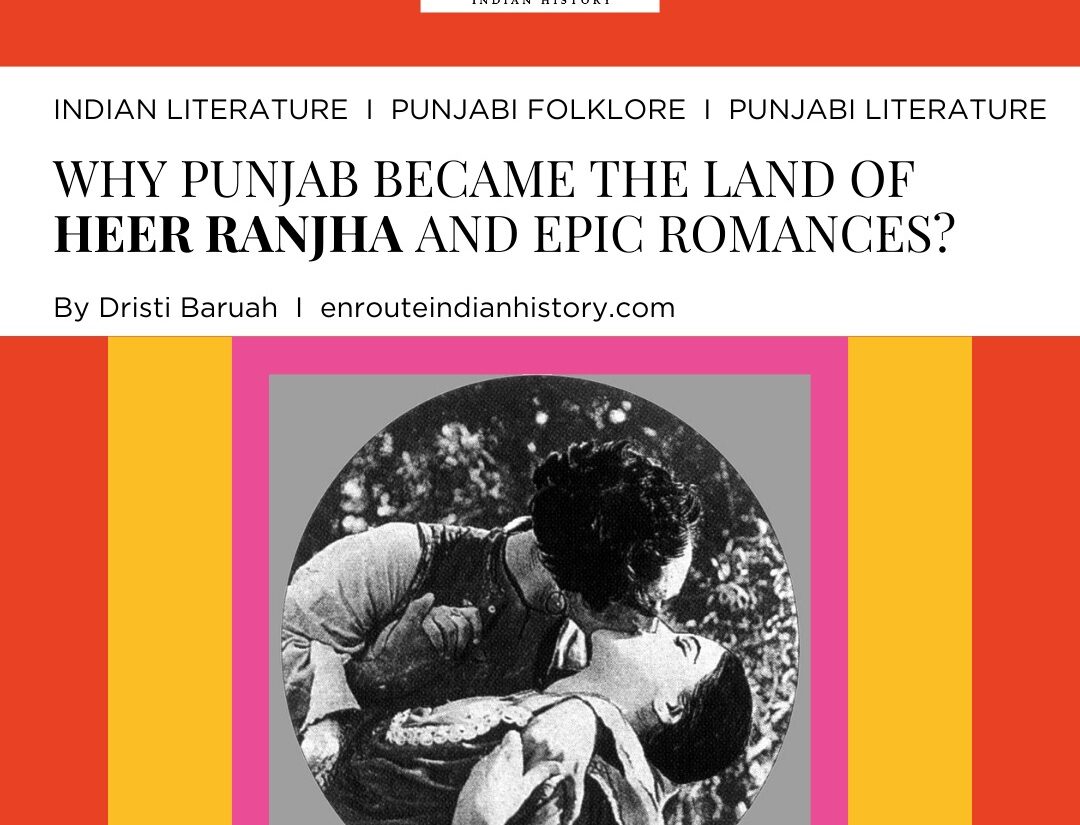How Female Writers Explore Love, Romance and Heartbreak?
- EIH User
- February 16, 2024
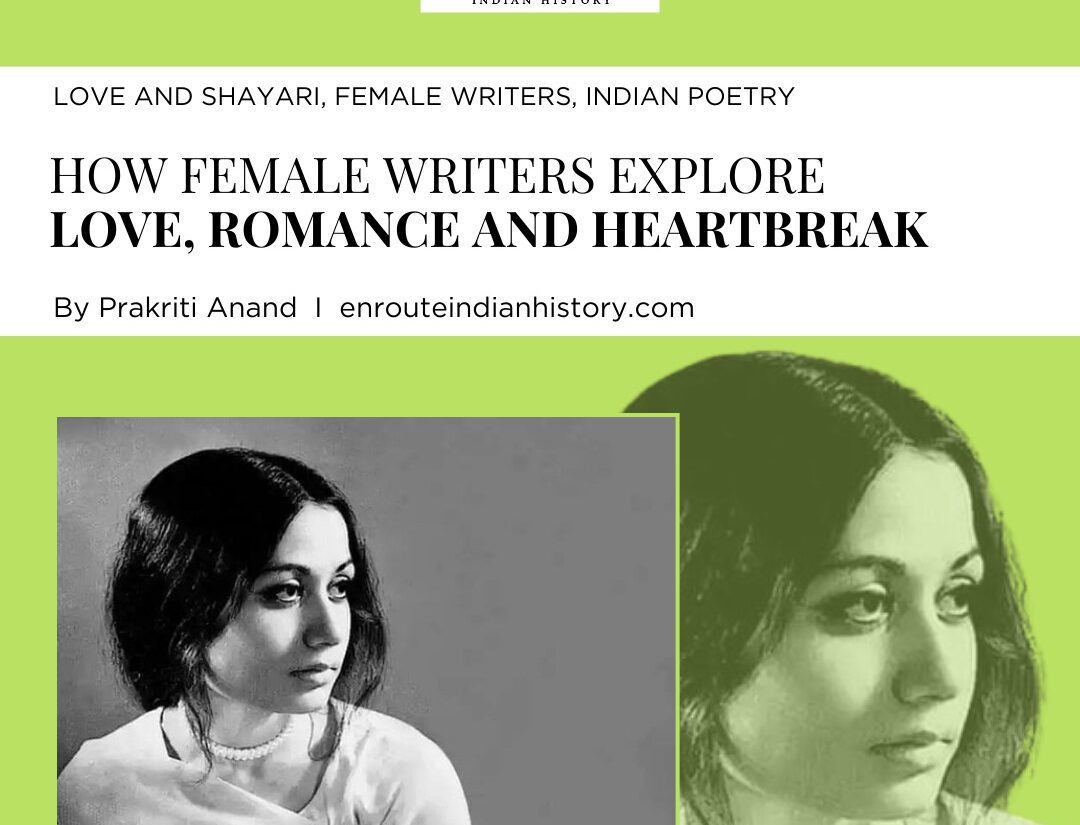
Her eyes are cups of wine, her smile is like a line of pearls, her lips softer than the morning rose, she is the beloved- Premika, Preyasi, the glorified dream of Aashiq (lovers). While the female beloved in the writings of male writers emerges as she who nurtures the lover with the gaze of their almond eyes, the softness of their body, and the gentleness of their heart, these works seem to lack the spectrum of experiences that come naturally to any human being in love. In becoming a dream that the lover must run after throughout his romantic quest, women become an object in romance- they can “be loved”, but can not perform, feel, or express love. Like everything else that had meaning and beauty, love and its expression for women was and remained a luxury for a long time.

Menaka proposed the ascetic Vishwamitra, a painting by Raja Ravi Varma (Source: Wikimedia Commons)
“If you want to get something done right, you have to do it yourself.” Following this line of thought, one can assume, and rightfully so, that the most well-rounded and multifaceted descriptions of women in love, come from the writings of women themselves. This is a love letter to these women, who dared to love, and commemorate it through their works!
The First Ones: Women Writing on Love in Medieval Times
Ghazals and Shayaris, which rule the heart and playlist of every modern romantic, have their roots in the writing traditions of the medieval period, when Urdu, Arabic, and Persian were blending in the royal courts, under the patronage of kings. The earliest writers popular for their romantic verses were unsurprisingly men, but a few women with the sharpness of their pens and softness of the words, were making space in their veils, allowing their literary glory to seep through.

Zebunnisa or Makhfi, the daughter of Alamgir (Source: Rare Book Society of India)
Two such remarkable women are Zebunnisa (Mukherjee 2001), the eldest daughter of Aurangzeb, and Mah Laqa Bai, the renowned moon of the court of Hyderabad. While Mah Laqa Bai assumed a comparatively freer space as a courtesan, the story of Zebunnisa becomes interesting due to her association with Aurangzeb, the Mughal ruler known for his orthodox views on Islam. Translated in English as “Diwan of Zeb-un-nisa”, the writings of the Mughal princess unveil the veiled character of their author beautifully, capturing her rather tragic love life. According to the introduction to Diwan-i-Zeb-un-nisa, she was originally supposed to marry Suleiman Shikoh, the son of Dara Shikoh but as the young prince who could have been a suited partner for Makhfi, was murdered by Aurangzeb (Lal and Westbrook 1913, 10), a life of heartbreaks began for her. When the princess finally met her match in a governor of Lahore named Aqil, fate took a sinister turn – Aurangzeb was told about her romance, and under the fear of the ruler, the princess was stood up by her beloved. The tale of this short-lived romance ends with the death of Aqil. Many while reading the lines of Zebunnisa, “Juda ho mujhse mira yaar ye khuda na kare, khuda kisi ke taheen dost se juda na kare” (God forbid I am ever separated from my beloved or friend, may He never bring separation between two close friends), find her lamenting the loss of her beloved in retrospection. Not just heartbreak, the writings of Zeb-un-nissa travel between the realms of human passion and divine ecstasy, with love, romance, and pining as central motifs, becoming remarkable predecessors to those who followed suit.
Rekhta and Rekhti: Love Becomes Feminine
The culture of Urdu and Persian grew majorly in the Mushairas or gatherings, a space that allowed the women to enter as the subject and object, in idea, but not as a participant or audience. Outside the “cultured” Mehfil or Mushairas, developed a distinct style of Urdu poetry, termed Rekhti, also known as “Begamati Zaban” (the language of women), a mode of expressing romance, passion, and desire, where the lover and the beloved, the aashiq and mashooq were both female (PETIEVICH 2003). But like many other innovations by women, Rekhti was soon colonized by male Shayars. For long popularized as “Aurton ki Boli” (the idiom of women), Rekhti with an origin story rooted in women’s desires and concepts of love and passion, was scrutinized and labeled “lewd” by many. This obstacle, however, could not stop the modern Shayaraas- women writers, with a richness in treatment of physical and emotional love. How they voiced their side of the love story with all its physical and emotional elements is riveting and speaks to the modern audience transcending the bounds of time and space.
Shayaraas: The Romantic Queens of Mushairas
When one thinks of heartbreak, a passionate lover frantically running towards the beloved, a human heart attaining stages of self-immersion in love, or a body burning with passion, the mind usually thinks of a male lover. The idea has been strengthened by popular Sher (couplets) and songs, where the broken, passionate, and maddened one in love is usually a man. It is often in the works of women writers that we find the female lover who loses heart, soul, and mind in love, and is defeated in love, with her free expression of desire and lamentation of separation.

Parveen Shakir (Source: Raza Rumi)
Parveen Shakir, a woman who wore many hats throughout her short life, is an undying Shamma (lamp) lighting up the world of Urdu poetry and Ghazals. Writer of the often quoted romantic verse in the literary world- “Husn ke samajhne ko ek umr chahiye jaana, ek ghadi ki chaahat me ladkiyaan nahi khultin” (it takes an age to comprehend beauty, women do not open up in a momentary rendezvous), Shakir’s life was anything but romantic. A learned woman, teacher, and administrator, Shakir, like any other romantic writer, could not stay away from the pain of separation. Her divorce and time as a single mother were episodes that brought a tinge of pain to her writings, leading her to pen verses such as “Lo main aankhein band kiye leti hun, ab tum rukhsat ho” (Now I close my eyes, O beloved, you can leave now), that resonate with innumerable women and men, wounded in love. Burnt, and thus matured by the fire of love, Shakir astutely expresses not just pain and separation, but the anxiety of a young lover, when she writes- “Kaanp uthati hun main ye soch ke tanhai mein, mere chehre pe tera naam na padh le koi” (I quiver with fear in isolation, what if somebody reads your name written all over my face).
Another famous, or rather infamous poetess of Urdu, Wajida Tabassum who authored works like “Utaran” (1975) and the storyline for Mira Nair’s movie “Kama Sutra: A Tale of Love”, in one of her works mentions- “Mohobbat karne wale nidar ho jaate hain, khauf ka koi jazba unhe baandh nahi sakta” (Fearless are those who love, no element of fear can bind them). Oh, how she reminds one of Madhubala as Anarkali in the 1960 “Mughal-e-Aazam”, challenging Akbar with nonchalant confidence- “Jab Pyaar Kiya to Darna Kya”, (Why be afraid, when one is in love?).
Mitro Marajani and Lihaaf: Reading Love and Desire in Modern Indian Prose

Lihaaf, a Cover (Source: In Plainspeak)
One is a story by the Hindi writer Krishna Sobti and the other is a short story by the Urdu author Ismat Chughtai. Two stars of the sky of Indian literature, these female authors often found themselves in “trouble”, for expressing female desire in popularly read languages and with “zero filters”, an attribute which the flowery, suggestive idiom of many male writers clearly lacked.
“Mitro Marajani” is the story of Mitro, the Middle daughter-in-law, whose mother is a woman of “ill-repute”, and who herself never shies away from expressing her discontent towards her husband disinterested in conjugal pleasures. Rebuked, misunderstood, and feared by the characters that surround her, the protagonist of Sobti is no revolutionary. She however is someone comfortable with her desires, and prone to causing the “Lakshman-rekha” meant to keep her within the four walls of her house. Whether it is her discussion with her sister-in-law over the physical and sensual charm of her body rebuttals towards her husband or her attempts to draw the attention of her husband to her physical beauty, Mitro is someone who takes control of her body (Sobti 1979).
The narrator of Ismat Chughtai’s Lihaaf is a young girl who admires the youth and appeal of Begum Jaan, the wife of a Nawab who is disinterested in her beauty. In the absence of Begum Jaan’s close attendant, Rabbu, Begum Jaan’s attentions are shifted to the narrator, who becomes the unwilling receiver of her passions. The story balancing skillfully between humor and amorousness, is a “coming-of-age” tale of the narrator, who discovered homo-erotic relations between Begum Jaan and Rabbu through the “shapes” and “movements” of the Lihaaf or quilt, that veiled and simultaneously revealed the lovers during their nightly love-making.
Bringing the themes of love, desire, and passion into the conversation of female characters, these stories gave a true-to-life quality to the emotions of women and without the fetishization of their views on bodily love and desire, despite all opposition, continue to be exemplary in language, expression, and subject.
Women Rivaling in Love: Two Lovers of One Beloved

A scene from Devadas, Paro and Chandramukhi, the two lovers of Devadas in Conversation (Source: Punjab Kesari)
Whether it is Paro and Chandramukhi of Devadas (2002) or Kashibai and Mastani of Bajirao Mastani (2015), women rivaling for the love of the same man seem to be forgiving and accepting, loving the beloved unconditionally even after being betrayed in love. Something just does not seem to fit. As one turns to the previously discussed writers, it becomes clear that women are not easy to let go once deceived or betrayed by love. “Woh mujhko chod kar jis aadmi ke pass gaya wo meri barabari ka bhi hota to sabr aa jata” (The one for whom my beloved abandoned me, I would have been satisfied if they were even at par with me), are the words of Parveen Shakir, a lament and jeering comment on her beloved, who has found himself a new lover. Rabbu, the “friend” and masseuse of Begum Jaan in Lihaaf, upon finding the development of physical relations between the narrator and the Begum comments- “Raw mangoes are sour to taste, Begum Jaan” (Chughtai, n.d40), clearly a comment at the “raw” or young and inexperienced age of the new lover (narrator) of Begum Jaan, a remark with layers of jealousy, angst and pride of an artful lover. This rivalry grows complex in Mitro Marajani, where the rival of Mitro is her mother, who is her confidant and teacher but is jealous of the simple comfort of conjugal ties between Mitro and her husband. Towards the climax of the story, the mother plots to defame Mitro and cause a rift between the couple out of jealousy but is overcome by guilt and stops Mitro before any disaster can ensue.
“Sautan” or “Saut” is the more popular umbrella term under which such textured rivalries of women in love are placed in the writings of men and sometimes even women writers. While the term with its resonance in the folk culture of the country represents the “other” in love, the writings of women examined here, and many others, showcase the nuanced and sometimes morally ambiguous actions of women, when faced with a competitor in the game of love, which is no game for their passion-filled hearts.
Modern Descendants: Female Lyricists Writing Love and Desire
Carrying the legacy of their literary ancestors, the lyricists and songwriters in modern movies present a continuation of the century-old tradition of women expressing romance. Beginning from Saroj Mohini Nayyar, the first female lyricist of India (the writer of Preetam Aan Milo, a song from the 1955 movie Mr and Mrs 55), the modern female songwriters infuse the bitter-sweet experience of love and its different phases in their lyrics. When Anvita Dutt, a famed Bollywood lyricist wrote “Chhaliya” (from the 2008 movie Tashan), lip-syncing to which the heroine (played by Kareena Kapoor) described herself as “Bikhre dil ka main haal hun, aur Ghalib ka main Khayal hun” (The definition of a shattered heart, I am the Khayal or thought of Ghalib), she tugged the strings of many hearts with her bold imagination of a woman teasingly warning her lover to “not look at her like that”. A similar mood of a woman aware of herself, flirting with her lovers and challenging them is voiced in her other song “Wallah Re Wallah” (from Tees Maar Khan, 2010), where Katrina Kaif declares poetically, “Har aashiq se husn ki ye iltija hai, kar shauq se tu qurbaan zindagi” (The beauty only urges this to the lovers, you shall sacrifice your life for the beloved with great gaiety). In these lyrics, the beloved seeks nothing but a mischievous and passionate declaration of affection from her many lovers. It is the same lyricist who wrote “Ranjha”, the emotional number from the movie Shershah to express the pain of separation between the lovers. Evoking Ranjha and Dhola- two popular and tragic romantic figures from the folk culture of Punjab and Rajasthan, befitting to the context, Dutt is just one of the many talented female writers, who create magic with their words. The light of the moon-faced Chanda (Mah Laqa), daughters of Makhfi, the descendants of Sobti and Chughtai, and friends of Shakir, these women writers can make a romantic out of anyone, with the sweetness with which they romanticize the pain and pleasures of love.
References
Chughtai, Ismat. n.d. “Lihaaf [The Quilt].” Edited by M. Asadudin. Manushi.
Lal, Magan, and Jessie D. Westbrook, trans. 1913. THE DIWAN OF ZEB-UN-NISSA.
Mukherjee, Soma. 2001. Royal Mughal Ladies and Their Contributions. Delhi: Gyan Publishing House.
PETIEVICH, CARLA. 2003. “Gender Politics and the Urdu Ghazal: Exploratory Observations on Rekhta vs. Rekhti – Samyukta: A Journal of Gender and Culture.” Samyukta Journal. https://samyuktajournal.in/gender-politics-and-the-urdu-ghazal-exploratory-observations-on-rekhta-vs-rekhti/.
Sobti, Krishna. 1979. “Mitro Marjani (“Damn you, Mitro!”).” Edited by R.S. Yadav. Manushi, Indian Literature, The Indian Novel Today Vol. 22, No. 4, 50-131.
Image Sources-
- Menaka proposing the ascetic Vishwamitra, a painting by Raja Ravi Varma (Source: Wikimedia Commons), https://en.wikipedia.org/wiki/Menaka#/media/File:Menaka_Vishwamitra_by_RRV.jpg
- Zebunnisa or Makhfi, the daughter of Alamgir (Source: Rare Book Society of India) https://rarebooksocietyofindia.org/postDetail.php?id=196174216674_10151053315401675
- Parveen Shakir (Source: Raza Rumi) https://razarumi.com/remembering-parveen-shakir-1952-1994
- Lihaaf, a Cover (Source: In Plainspeak) https://www.tarshi.net/inplainspeak/review-lihaaf/
- A scene from Devadas, Paro and Chandramukhi, the two lovers of Devadas in Conversation (Source: Punjab Kesari) https://jagbani.punjabkesari.in/entertainment/news/film-devdas-was-made-at-rs-20-crore-aishwarya-wore-600-sarees-1300566
- February 19, 2024
- 6 Min Read
- February 19, 2024
- 6 Min Read
- February 16, 2024
- 8 Min Read
- January 17, 2024
- 10 Min Read
